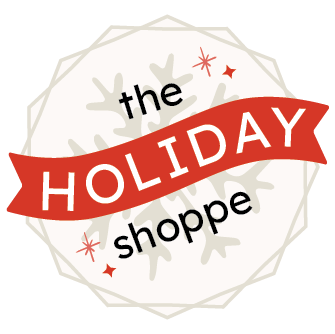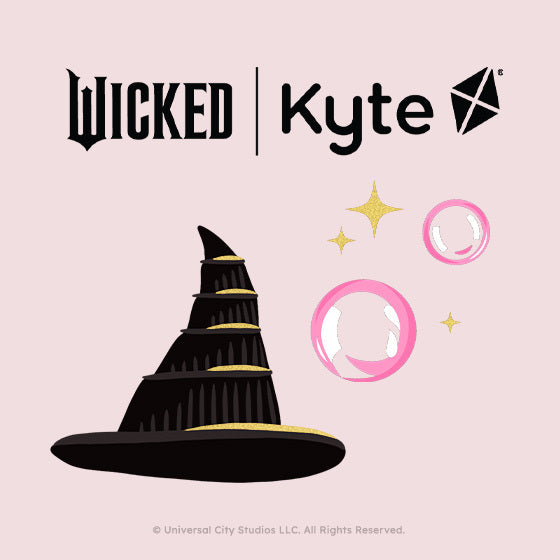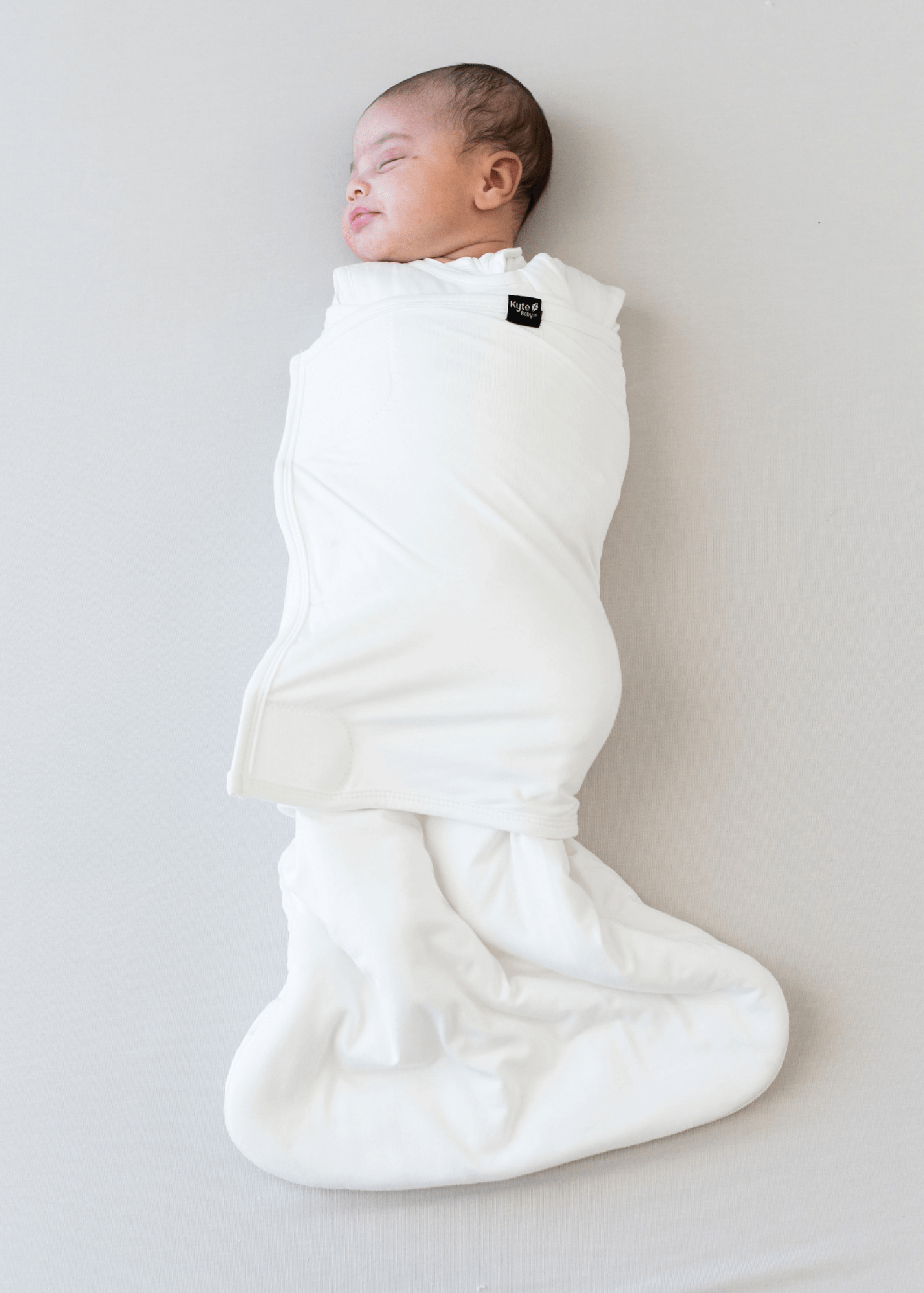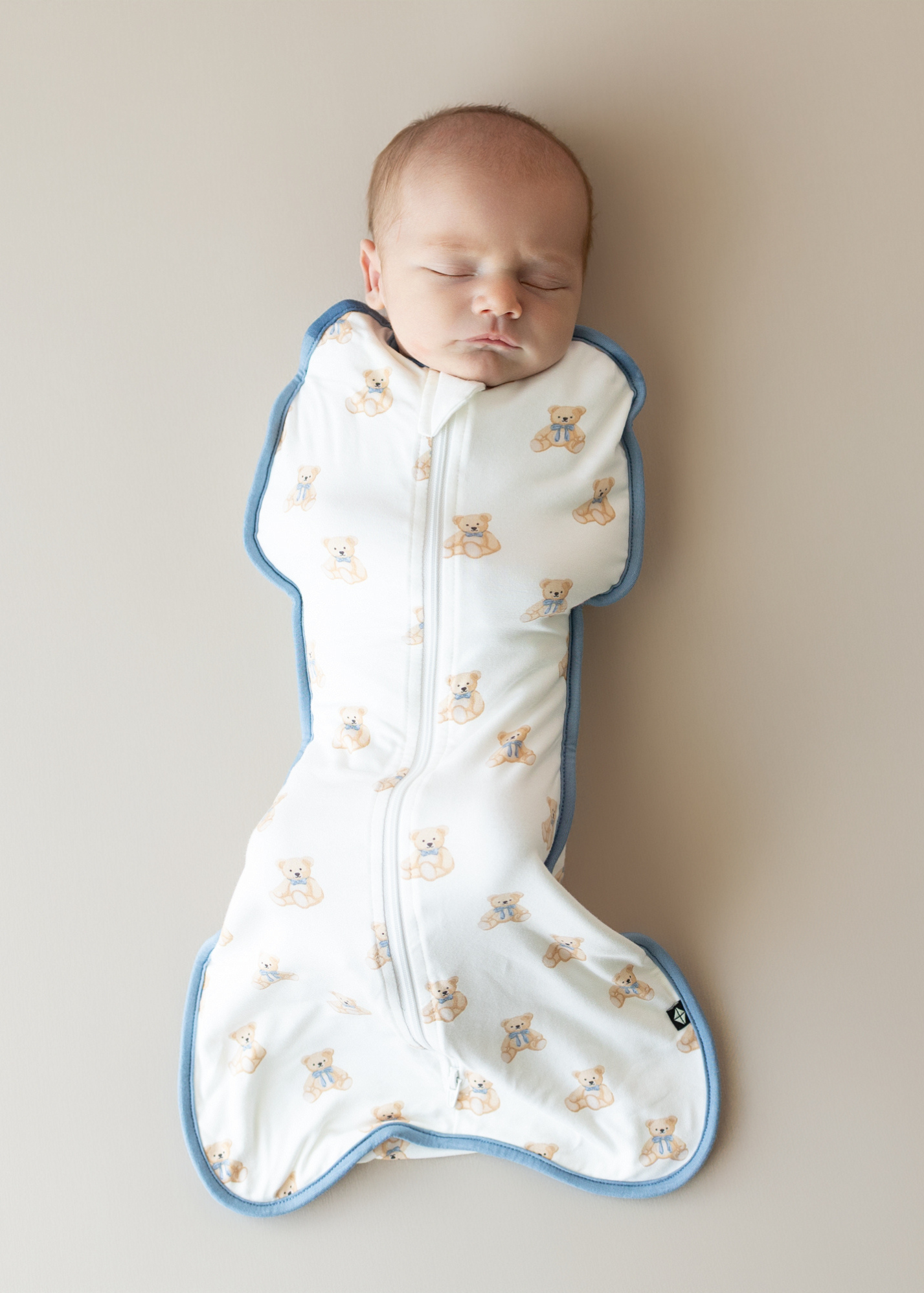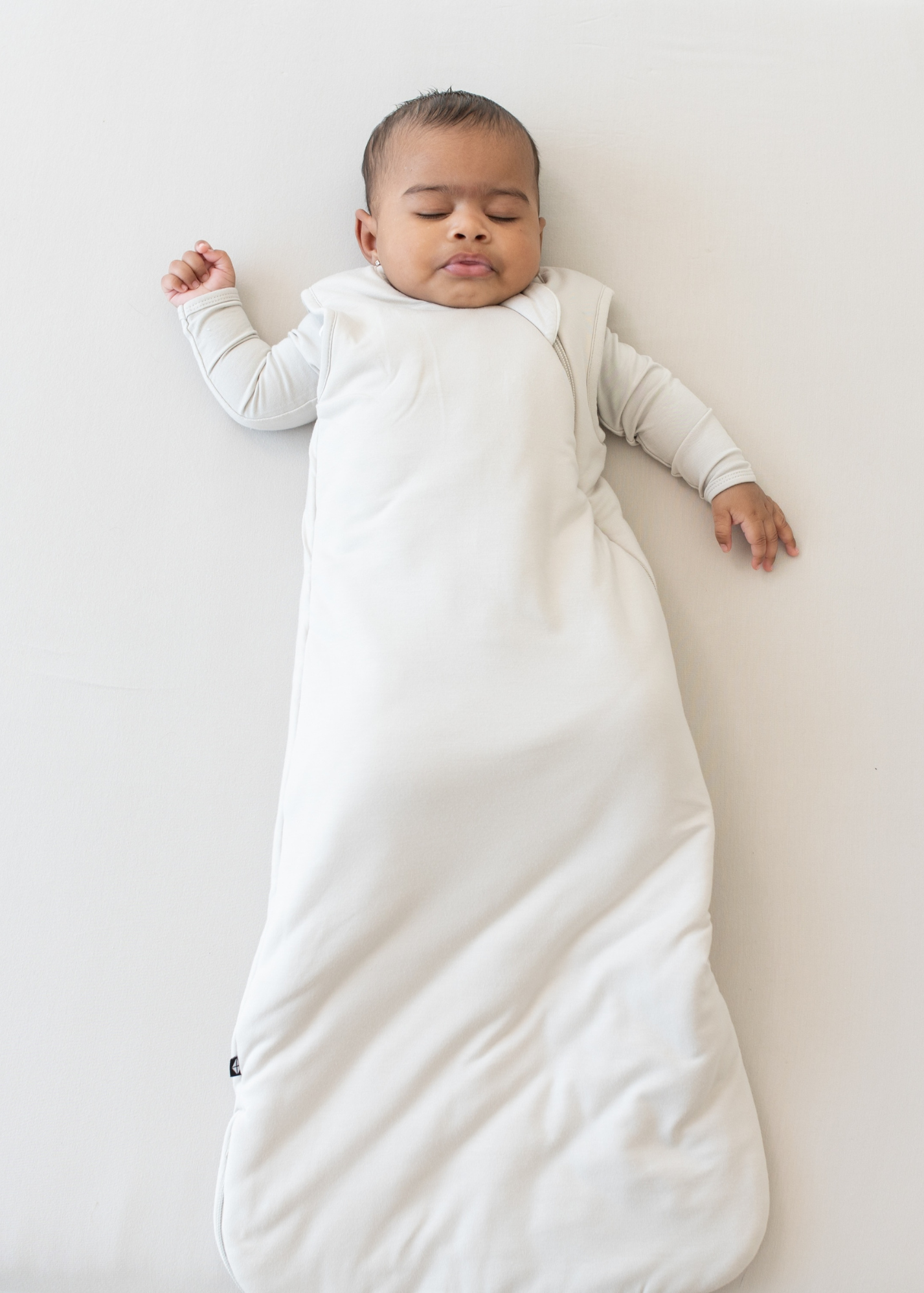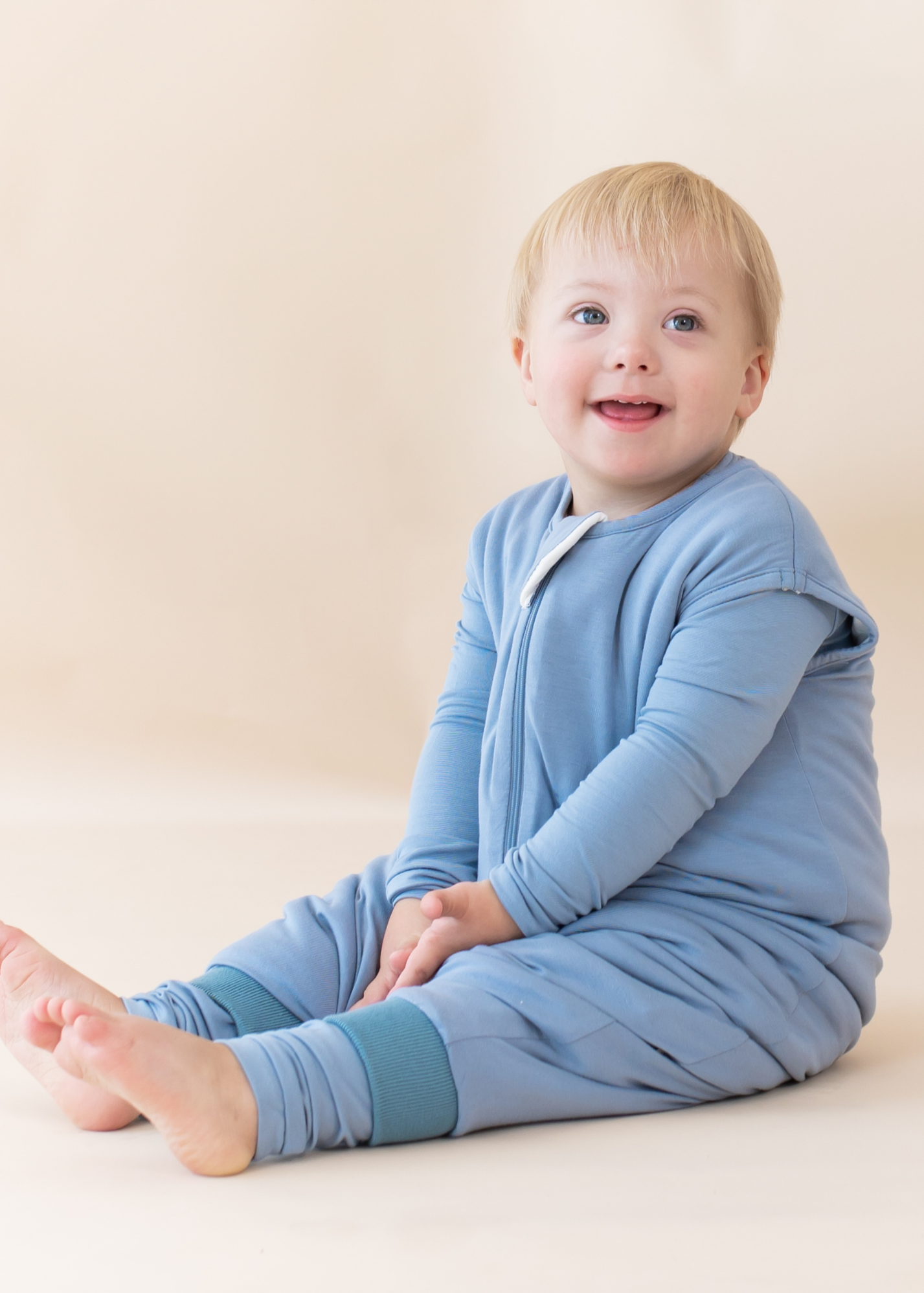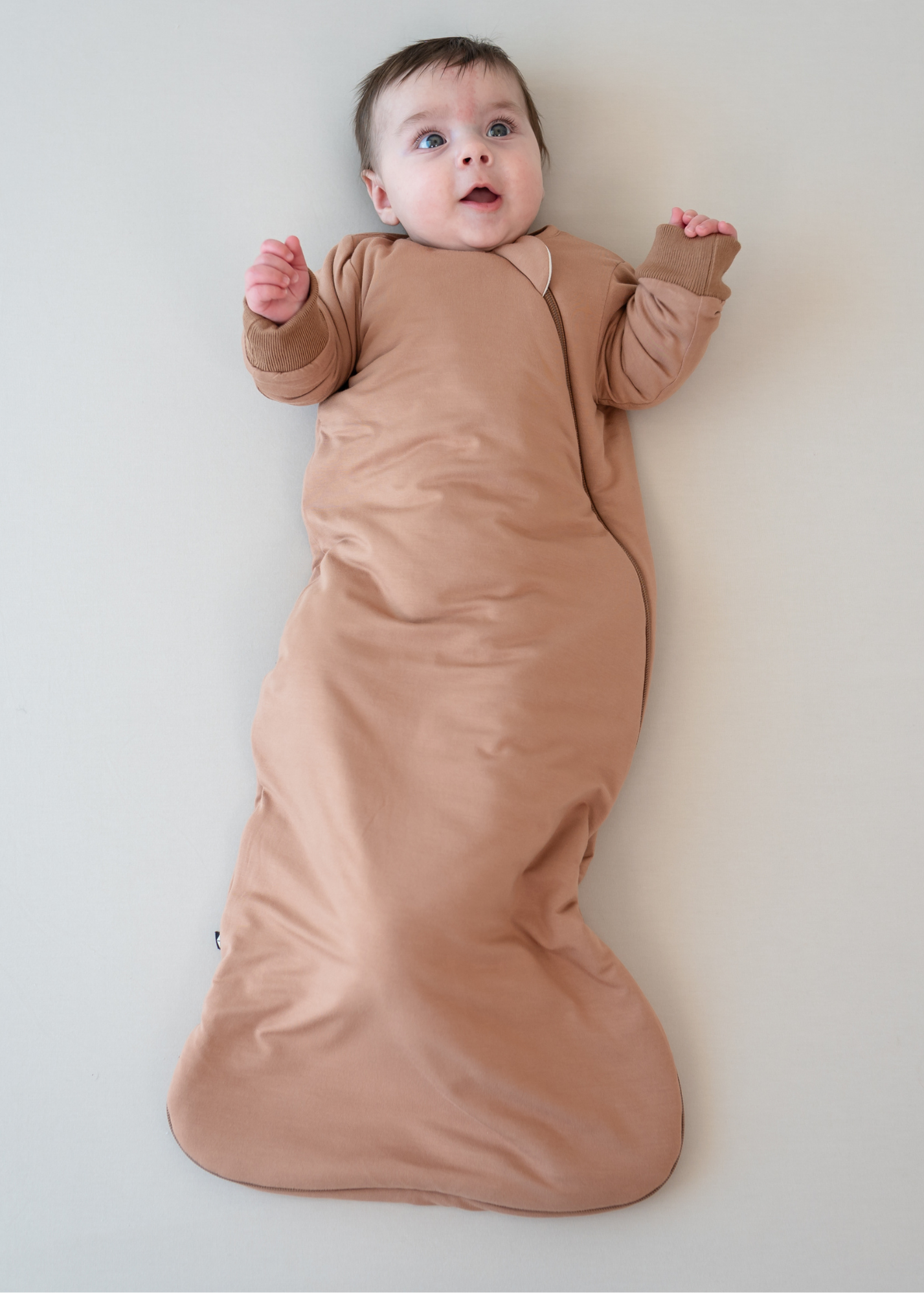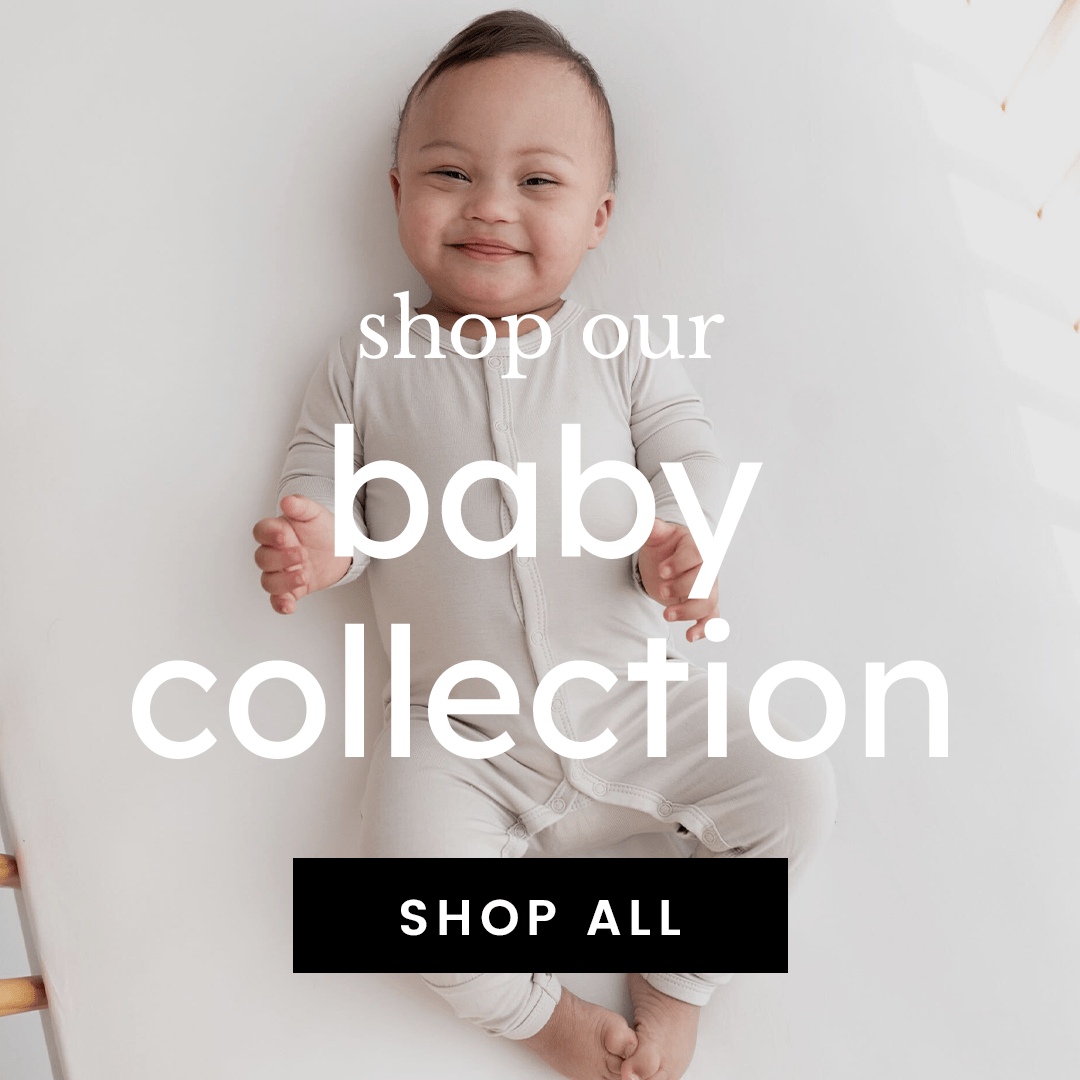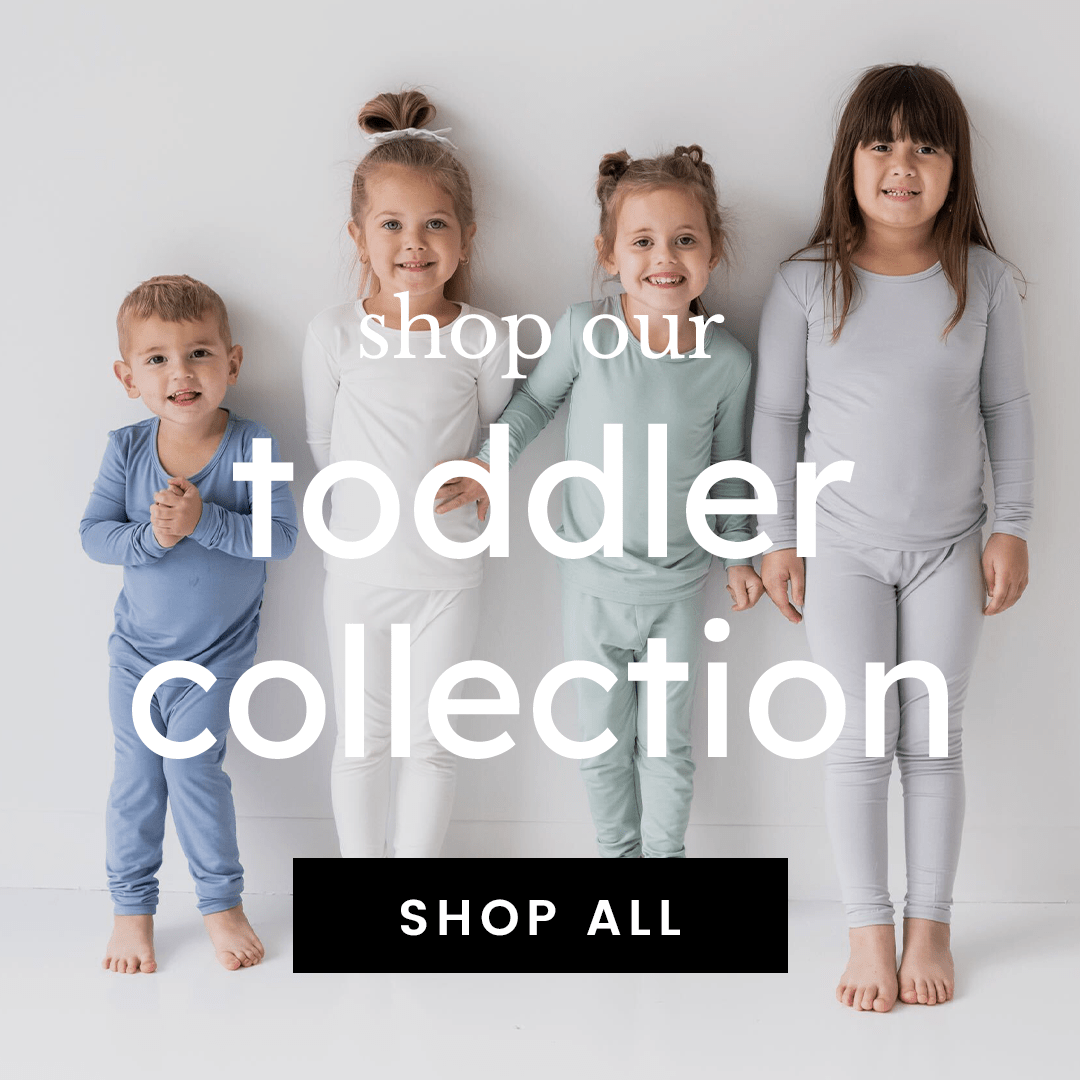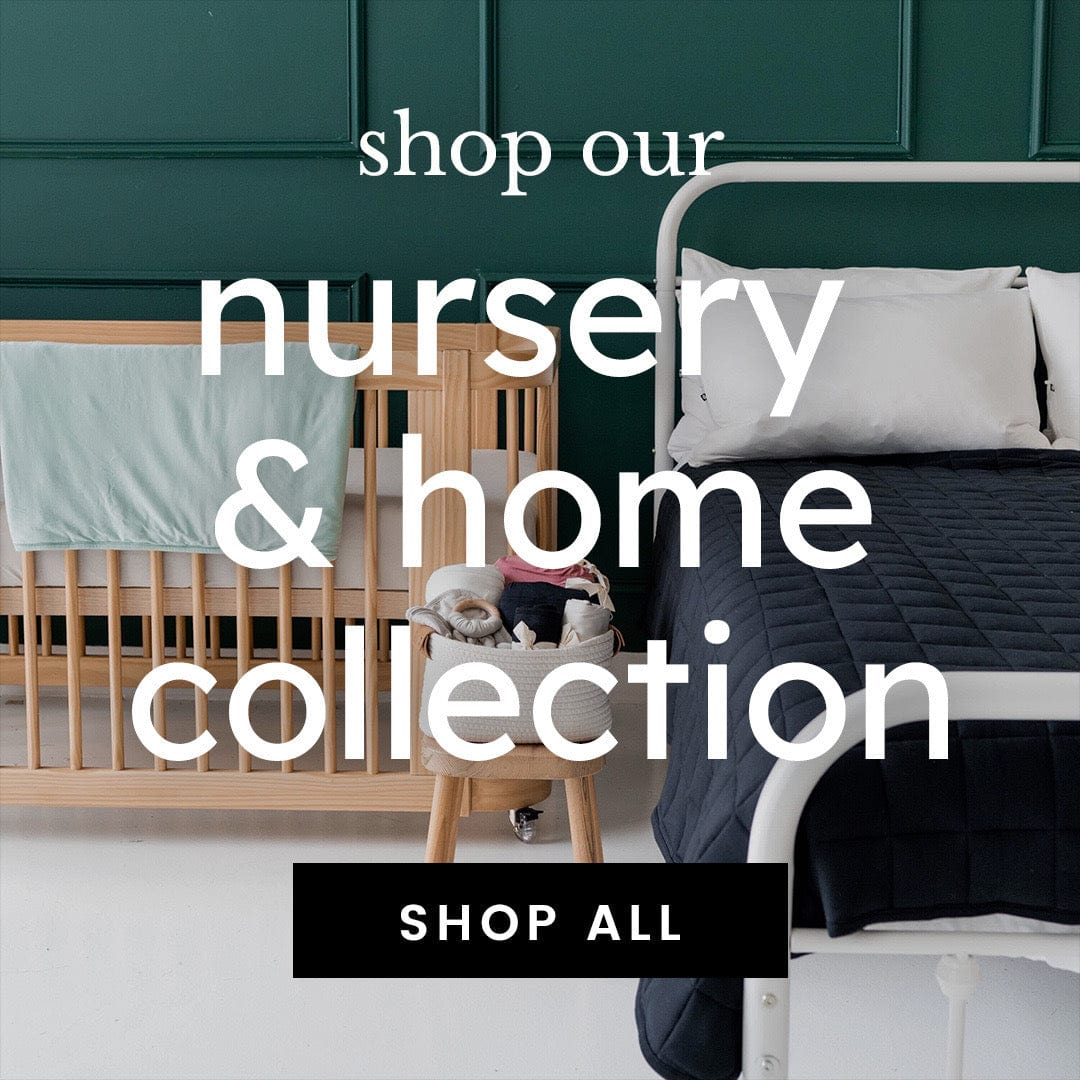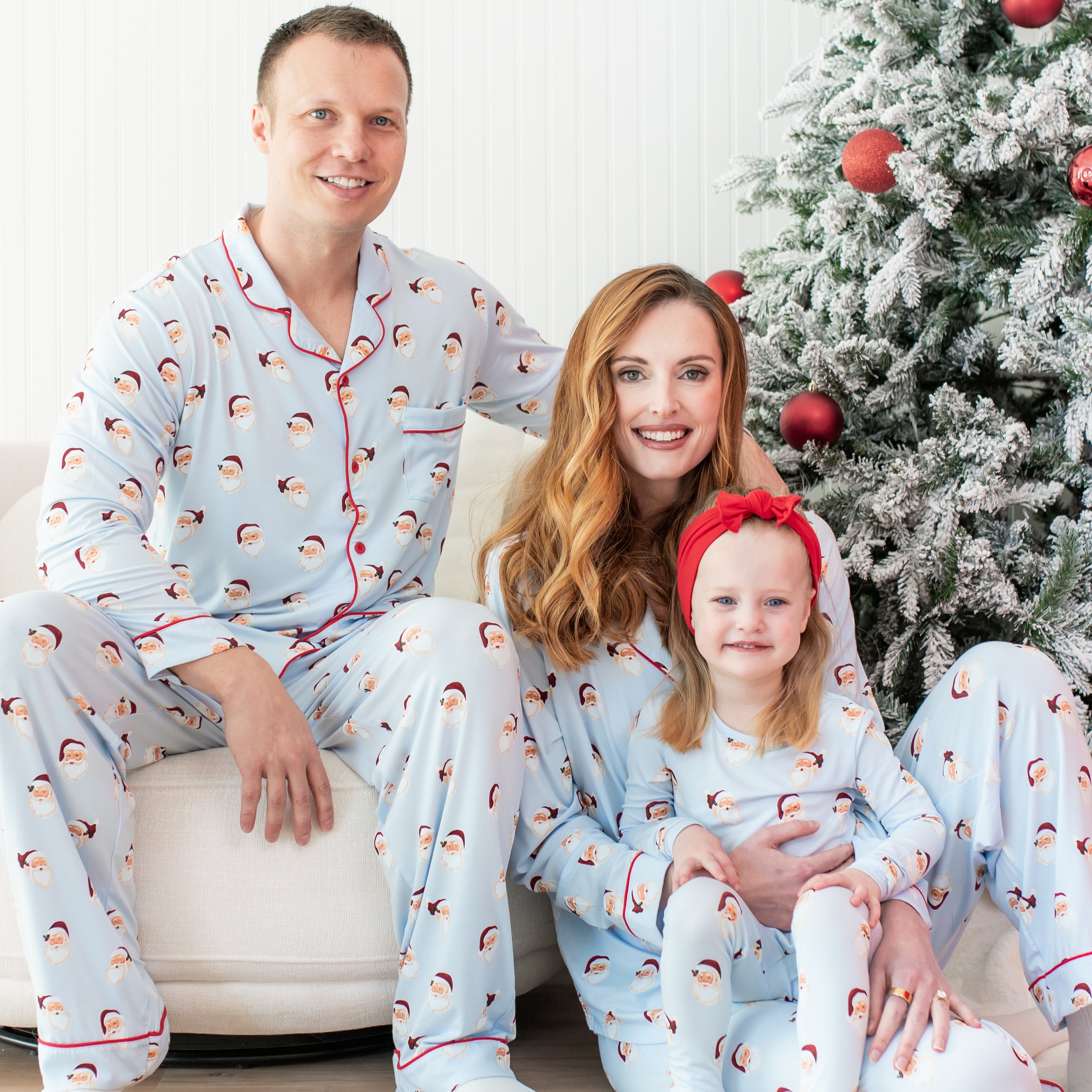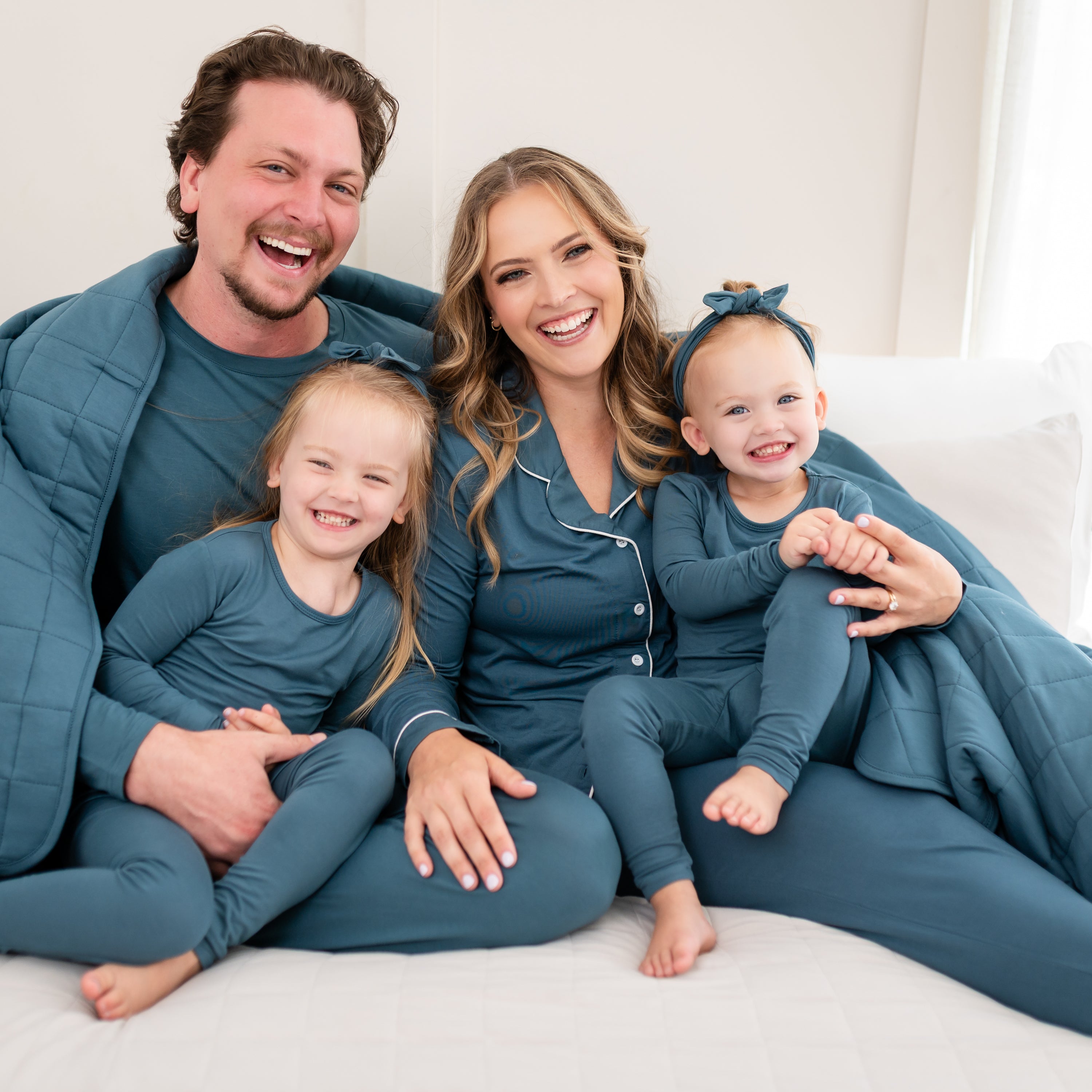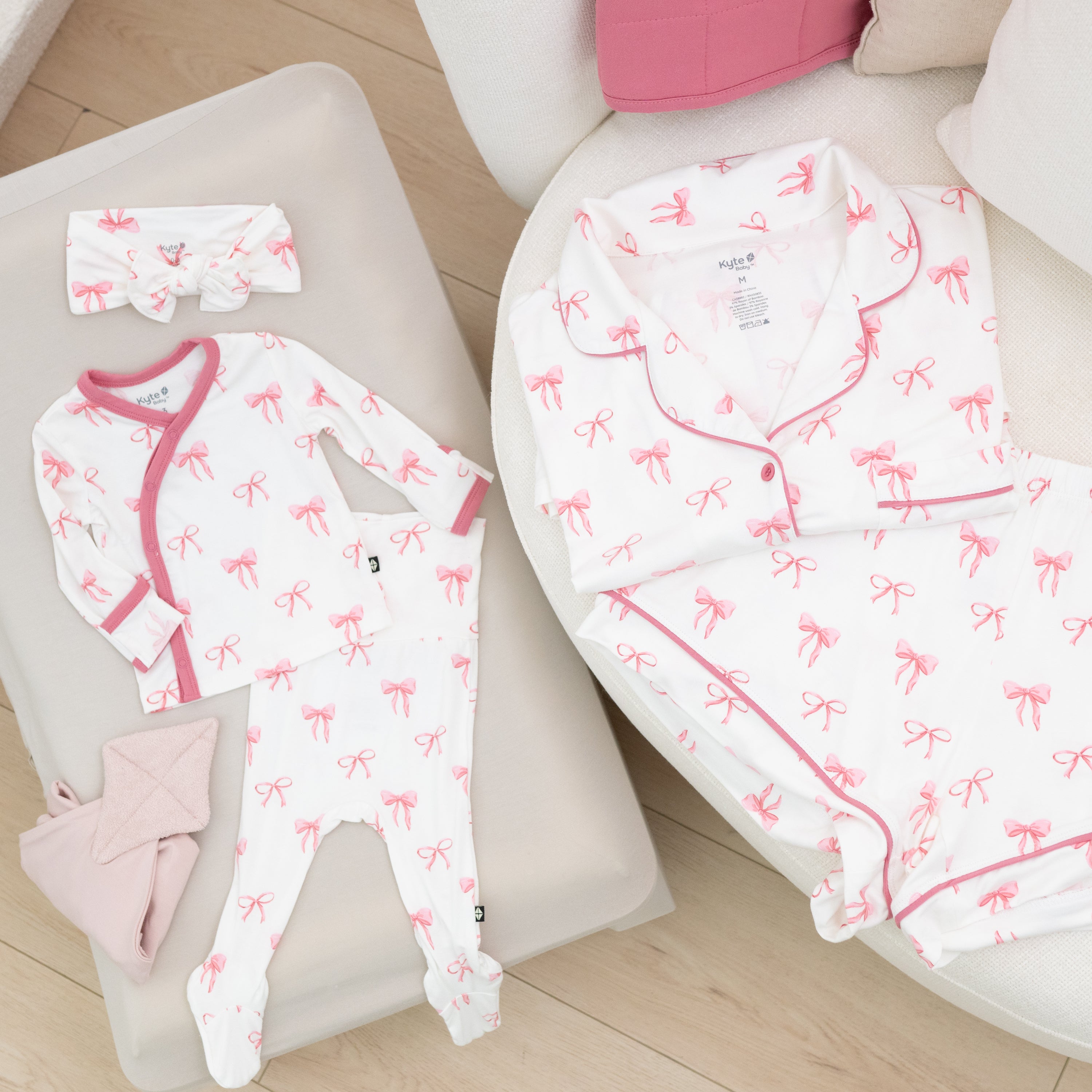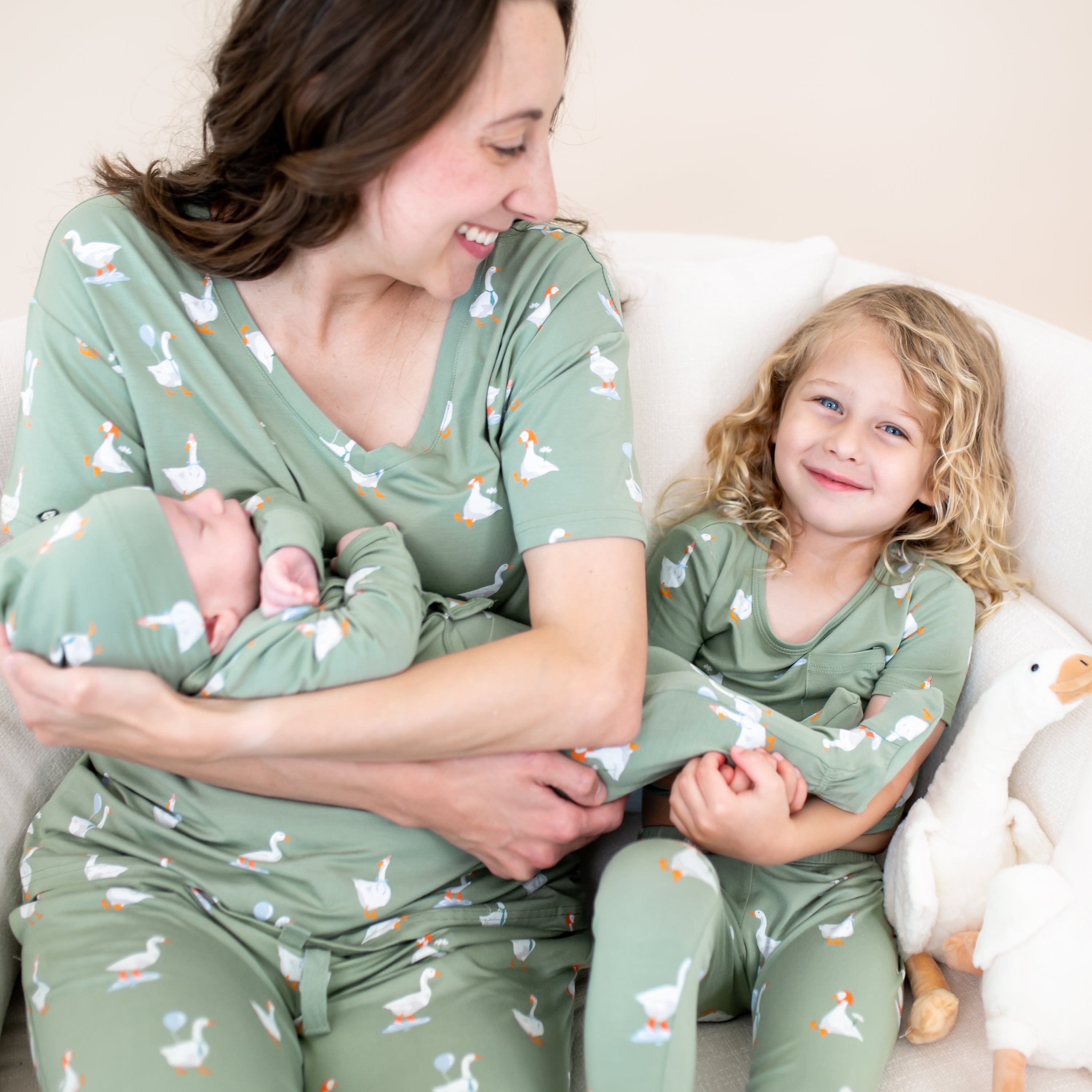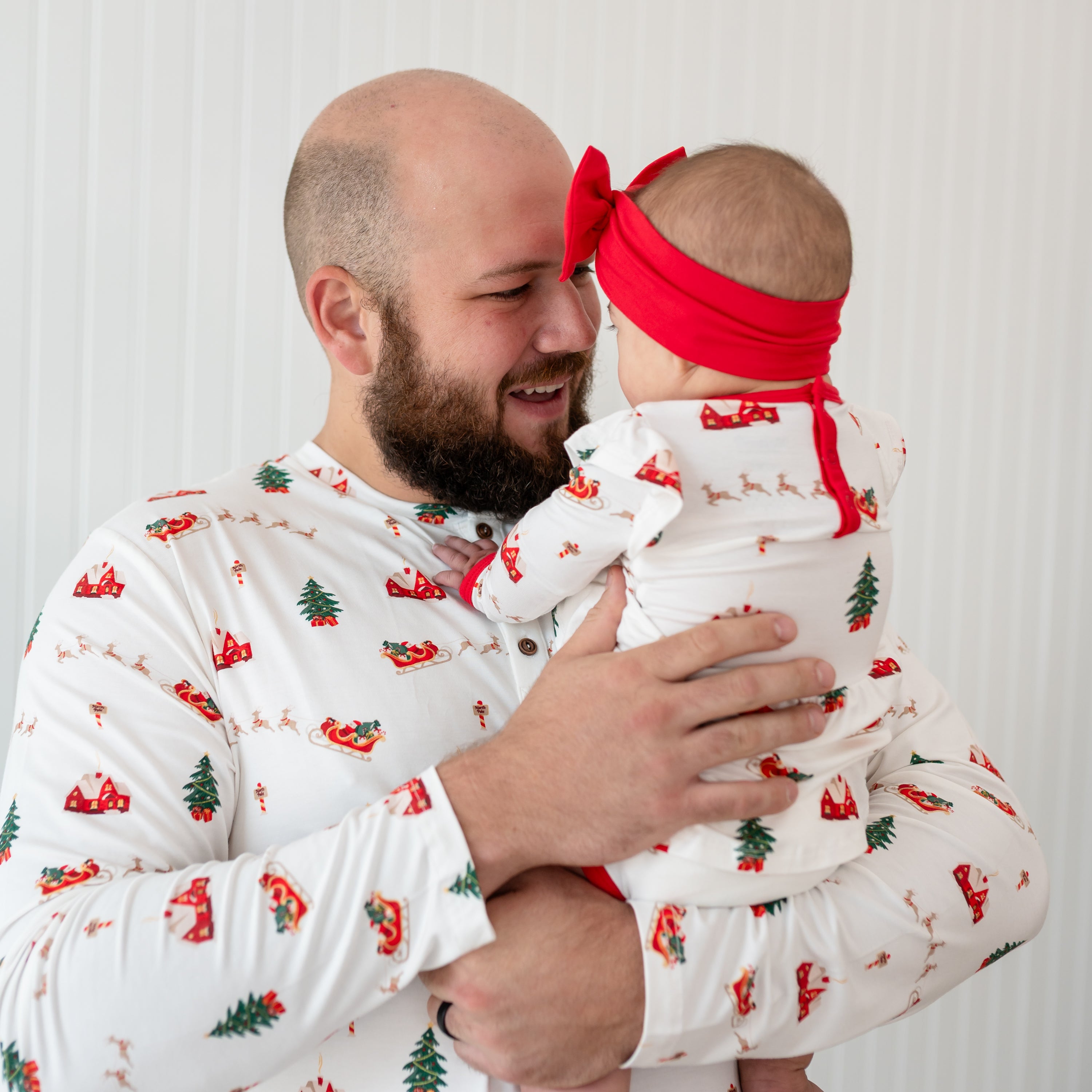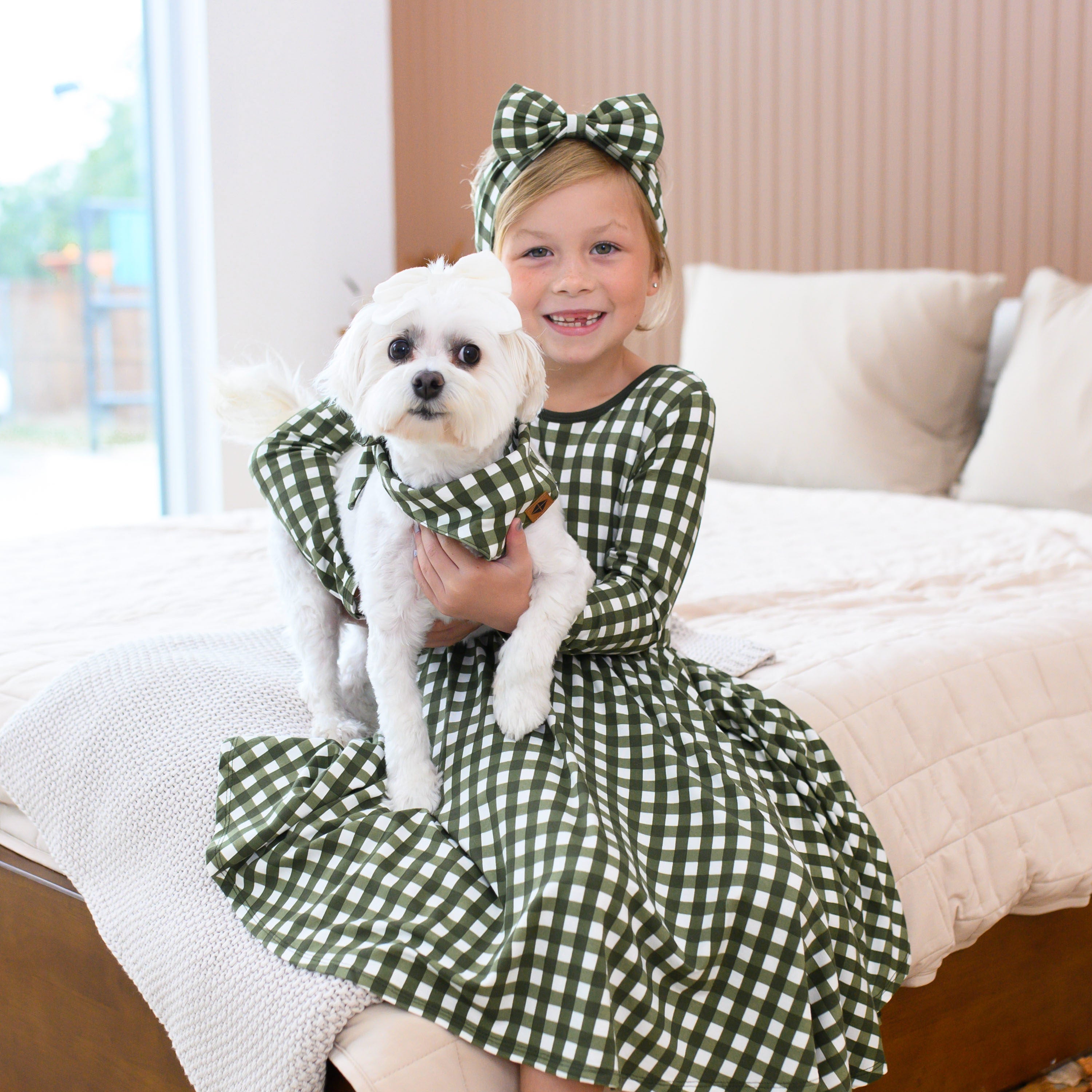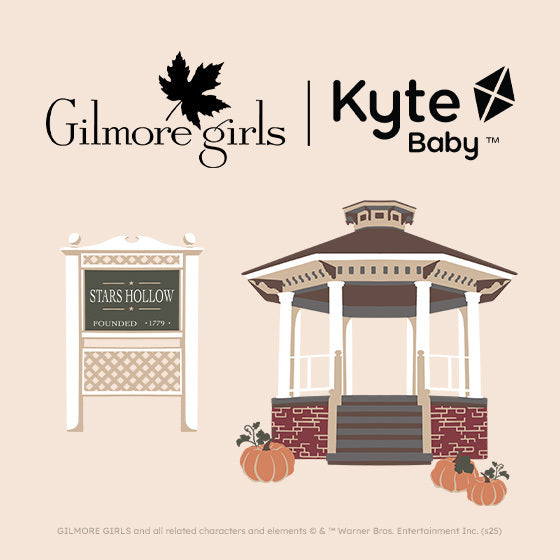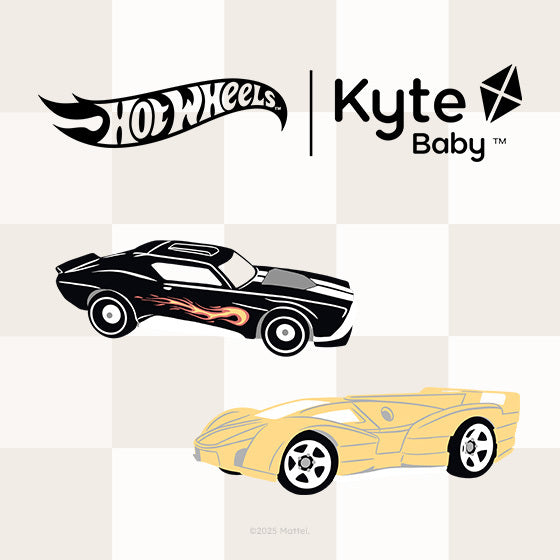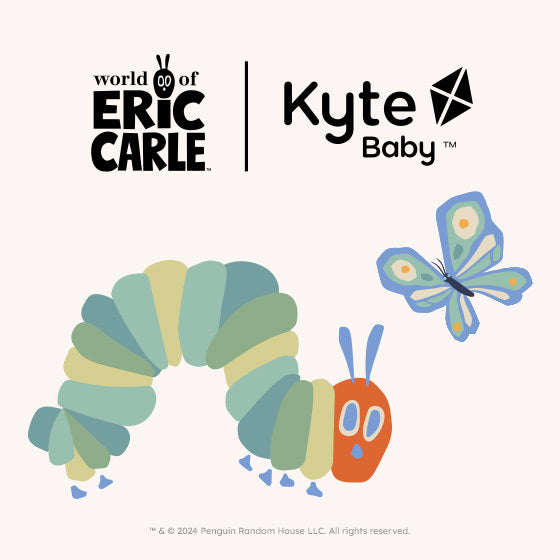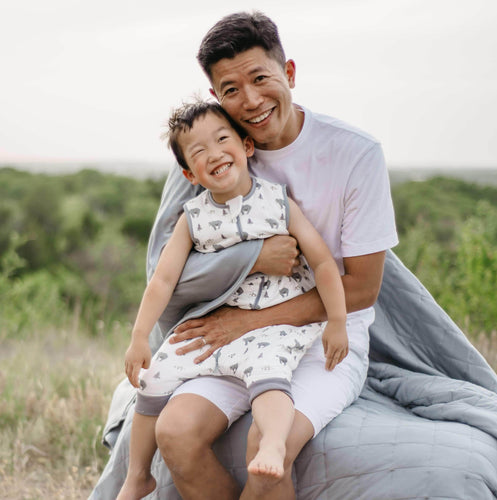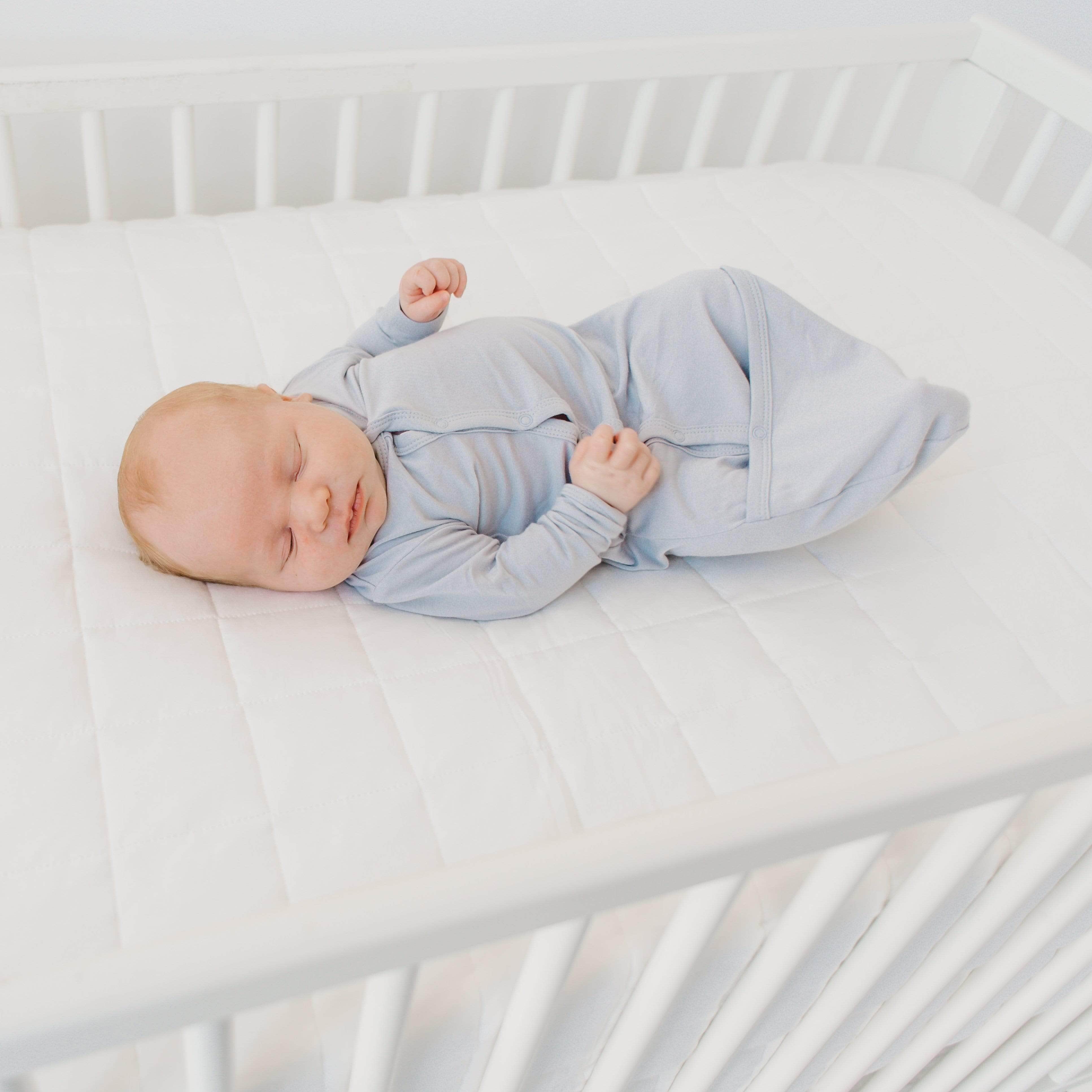50 Newborn Necessities for the Prepared Parent
Congratulations! You’re probably reading this because you’re nearing your due date or you already welcomed baby home. While your house is filled to the brim with joy and excitement, your mind may be spinning with questions . . . lots of questions. The main one being “What do I really need for my newborn?”
Don’t worry, we have tried and true answers for you. Here’s our list of the 50 must-have newborn necessities from sleeping, clothing and bathing to what-to-have-on-hand in an emergency and essential items for you the mom.
Sleep
As far as material items go, this category is fairly minimal. That’s because safe sleep for newborns requires only a flat surface and a swaddle (or a sleep sack, if your newborn prefers). According to the American Academy of Pediatrics, “Infants should sleep in the same bedroom as their parents – but on a separate surface . . . to decrease the risks of sleep-related deaths.” Whether that separate surface is a bassinet, crib, Moses basket or a smart sleeper, be sure to wash and dry all bedding material before baby’s first slumber, including the swaddle or sleep bag he’ll be sleeping in.
Did you know the AAP also recommends the use of pacifiers? Studies have shown that sucking on a pacifier can reduce the risk of SIDS and other sleep-related deaths by triggering a baby's natural suckling reflex.
Since baby will spit up or blow out in the middle of the night, keep nearby a stack of 2–3 bassinet mattress covers or crib sheets , swaddling blankets and/or sleep sacks. I like to keep mine in a rolling caddy like this one from Ikea. This makes it easy to maneuver in the dark between your bed and the bassinet (it has wheels) and to organize on one of the shelves.
Speaking of finding things in the dark, you’ll also become proficient at doing things in the dark like changing diapers and swaddling your baby. Review our post on The Difference Between a Swaddle and a Sleep Sack for detailed instructions on swaddling.
And lastly, a white noise machine. White noise is comforting to newborns who just emerged from your womb which was, believe it or not, a fairly loud place. She heard the sound of your heart beating and blood pumping constantly for nine months, not to mention the occasional car engine revving, dogs barking and stereo playing. She is accustomed to noise as loud as a vacuum cleaner, so go ahead and turn up the static. Or if you find it easier, download a white noise app or simply ask Alexa to “play white

Sleeping essentials include the following:
- A flat surface separate from your bed, such as a crib or bassinet
- 2 Swaddling blankets or 2 sleep sacks (because two is always better than one)
- 2–4 Crib sheets
- Utility Cart or another handy organization tool
- White noise machine
- 2 pacifiers, because you will inevitably misplace one
Diapering
Did you know, your baby's first diapers will be filled with a dark brownish green substance called meconium? Mec is your baby's first bowel movement and, boy, is it sticky! A tip on keeping it from sticking to baby's skin is to apply olive oil after wiping him clean. This lubricates the skin and makes it easier to wipe the mess off next time.
Meconium doesn't last very long. You'll notice that baby's poo gradually goes from black to yellow during the first week earthside. While it is completely possible to use cloth diapers during this time, you may prefer having disposable ones on hand if you find the meconium a tad tiring to clean.
And you've probably heard this before — you can't have too many wipes! You'll need these handy for the diaper change that never ends. My firstborn went through five diapers in five minutes at one point and let me tell you, wipes had my back. But what you may not have heard is that there is such a thing as reusable wipes; and if you're in a pinch, a nearby washcloth or burp cloth can double as one. Read here five times our ultra soft bamboo washcloths were used as wipes.
So what will you need for this stage?
- Diapers, sizes NB and 1, cloth or disposable
- Wipes and/or washcloths
- Pure olive oil
- Diaper rash cream or make your own
- Changing pad
- 2Changing pad
Clothing
Your baby will spit up, blow out and slobber all day long. Not only that, but you will leak milk, cry tears and even drop food on yourself and the baby. So, needless to say, there will be wardrobe changes. The main question is how many items of clothing do you need. Let's break it down.
If your baby nurses every 2–4 hours, that is approximately 6–12 times a day, you can safely guesstimate baby (and yourself) will make a mess of things during at least half of those feedings. So, expect 3–6 different outfits daily. That adds up to 21–42 total outfits for the week, but that doesn't mean you need 40 of each layette piece — who even has the space for that? Whittle it down to the median which is approximately 30 newborn pieces, if you can manage to do the washing every few days.
Thirty newborn pieces looks like this:
- 5 bundlers(one per night)
- 6 footies
- 6 onesies
- 2 hats
- 3 pairs of scratch mittens
- 2 pairs of pants
- 6 pairs of socks
When you look at it this way, there are not that many of each body type. But it is just enough to make it through the week on just one or two loads of laundry.
Feeding
Besides the obvious essentials — breast milk and/or formula — there are some accessories you must have on hand for efficient, safe and healthy feeding.
One being a nursing pillow. Nursing pillows such as the Boppyor My Brest Friend not only provide support for your chest, back and shoulders but also positions baby so that she can eat efficiently. The popular feeding positions — cradle, cross cradle and football hold — can all be achieved easily with the help of a nursing pillow. Using one doesn't mean your baby will spit up less, though. No, all babies spit up, but it does mean your babe has a better chance at getting his latch just right and encouraging you to maintain healthy nursing posture.
Another essential feeding item is a sterilizer. You'll want to sterilize your pump parts, bottles, nipples, pacifiers and even the bottle brush at least once a day. This is a key step in preventing the growth of harmful bacteria on everything that comes in contact with your baby's mouth.
If your heart is set on breastfeeding, then purchase nipple ointment. Your nipples will endure quite the beating (not exaggerating!) during the first couple weeks as your newborn learns to latch. Apply nipple ointment before and after every feeding. If the ointment is not enough, then ask your healthcare provider for a prescription for a compounding cream.
As mentioned before, your baby will spit up and maybe even projectile vomit. As long as baby is gaining weight as your pediatrician recommends, then the puke is nothing to worry about. But you will need to mop it up with plenty of burp cloths and bibs. Add these along with nursing pads to your registry because you honestly cannot have enough!
As your hormone levels fluctuate postpartum, you may experience an over or undersupply in breast milk. For oversupply, use a breast pump regularly to express milk from engorged breasts. You can also try hand expressing which does not require a pump. Read our five nursing tips that will change your life here.
For undersupply, try skin-to-skin with your newborn. You can do this in bed as often as possible, but if you have a toddler to keep up with or other circumstances that require you up and about, try using a ring sling or other newborn-safe carrier to hold your baby close to your chest. The bonding that skin-to-skin and babywearing provides has shown to effectively increase a mother’s milk supply.
Another option is to consume galactogogues, foods that naturally boost milk production. These include oats, flaxseed, brewer’s yeast and Fenugreek. Please check with your doctor first before consuming these.
Stock up on:
- Formula (even if exclusively breastfeeding, storing a carton of formula will give you peace of mind in case you are not able to nurse baby for some reason)
- 2–4 bottles
- A package of breast milk freezer bags
- A package of disposable nursing pads or 4 sets of reusable ones
- A pump with parts and a reusable ice pack (get one for free through your insurance)
- Nursing pillow
- Bottlebrush
- Drying rack
- 10–20 Burp cloths
- 10 Bibs
- Nipple ointment
- Galactogogues — here is a recipe for delicious and effective lactation bites
- A carrier such as a ring sling or wrap, both safe for newborns
Bathing
You should hold off on fully submerging baby in a bath until his cord stump naturally sloughs off. In the meantime, give baby a sea spongebath starting from the head and working down to the toes, being careful to avoid the belly button area until it has fully healed and scabbed over.
Be sure to wash deep into the neck folds where milk, spit up, sweat and saliva get trapped. Same goes for chunky thigh rolls and in between fingers and toes. Baby's skin will naturally start to peel within the first month, especially near the hairline. Let the process take its course and do not try to peel the skin with your fingers or a washcloth as this will irritate the brand new layer coming through. Instead, use a cradle cap brush to gently lift dead skin cells from her scalp and work baby's natural oils through her hair.
For both spot-cleaning and a fully submerged bath, here are the essential bathtime products:
35, Bath basin or an infant tub
36, Gentle soap
- 3–5 Washcloths
- Cradle cap brush
- Sea sponge
- Hooded towel
- Baby toothbrush

Hygiene
Beyond bath time, there are a few items you will need to round out baby's bedtime and hygiene rituals. You may need to double up on these so you can have a set both at home and in your diaper bag.
- A suctioning bulb or system for snot, such as the Nose Frida
- Baby ear swabs
- Safety nail clippers and nail file
- Ointment or grapeseed oil for rashes, redness, baby acne and skin irritations, which are common in newborns
Emergency Kit
When newborns fall ill, there is not much we can offer them aside from breast milk or formula and extra snuggles. It is not safe to offer them over the counter supplements, essential oils or even prescribed medicines because we do not know how they will affect a newborn's body.
With that said, you should have a reliable thermometer and nose suctioning device, as recommended above. You will need to take your newborn’s temperature regularly the first few days to ensure he is maintaining the proper body temp. And using a suctioning bulb when baby has a runny nose will prevent a build up of snot and mucus from traveling to the ear canal and possibly causing an ear infection.
- Thermometer
For Mom
Finally, you need a few things to help yourself help your baby. The most important being friends and family to make you food and help with chores so that you can rest in bed as long as possible. The rest include:
- At least 3–5 nursing bras and camis
- Adult diapers and pads
- Water bottle
- Prenatal vitamins
Babywearing
One of the most overwhelming things about parenting a newborn is how it can feel as though there’s no time in a 24-hour day to do anything except care for your baby. Even simple tasks like washing the dishes or doing the laundry become impossible when you’re feeding, rocking, bouncing, burping, changing, and more. This can quickly pile up and make you feel frazzled when you’re unable to catch up with housework. You may even find it difficult to go on a short walk outdoors for a mental health boost if your little one is in a fussy mood. Luckily there is a fix. Babywearing is one of those parent hacks that makes your life so much easier because when baby is happy, everyone is happy. Wearing your baby in a ring sling like this one keeps them calm and happy because they’re close to you, but also leaves your arms free to complete simple tasks or head outside for some much-needed fresh air. Babywearing has many benefits for both mom and baby, from strengthening your bond to improving your baby’s cognitive development (see our blog post on all the benefits here).
51. Ring sling, carrier, or wrap

Parenthood can feel like a never-ending season of trial and error, but with these 50 newborn essentials at your fingertips, you will feel prepared to tackle the first few months. Think of this list as a Parenting Starter Pack — it has everything you need for daily care and saves you time and precious energy for the milestones that lie ahead.
Disclaimer: No brands paid for a mention in this blog post.


